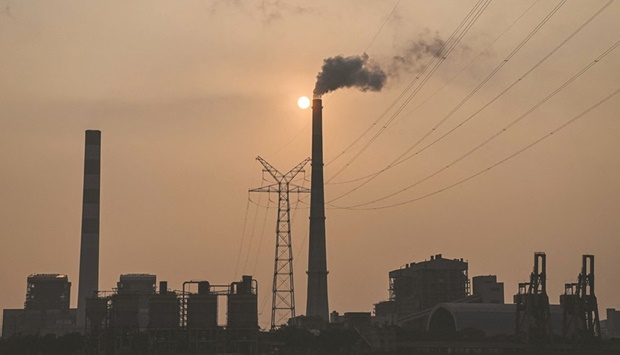China’s plans to add to its world-leading fleet of coal power plants are a short-term Band-Aid to address energy security concerns and don’t represent a shift in emissions policies, according to members of the team representing the nation at the COP27 summit.
New plants are being planned to address a spate of high-profile electricity shortages in recent years while providing a buffer to global energy markets that have become more volatile following Russia’s invasion of Ukraine, according to interviews with three of China’s delegates at the climate meeting in Egypt.
In the long run, electricity market reforms and massive investments in renewable power and energy storage will eventually curb and curtail coal use, allowing the country to hit its targets of peaking emissions by 2030 and zeroing them out by 2060, they said.
The strategy underscores China’s desire to avoid the kind of energy crisis facing Europe, but it has set off alarm bells for climate scientists who say the fuel needs to be phased out by 2040 to avoid the worst effects of climate change.
“We need an energy transition that’s high-quality and secure so it can be sustained,” said Li Zheng, a climate change and energy professor at Tsinghua University. “We don’t want to be like Europe and transform at the cost of energy security. They are now declaring that they are taking a step back in order to take two steps forward later.”
The climate researchers downplayed the size of the expansion, saying the country’s total coal capacity wouldn’t change much because of simultaneous retirements of older plants. Earlier this year, an executive from China’s top energy engineering firm said he expects the nation to approve 270 gigawatts worth of new plants through 2025, more than the entire fleet in the US.
Coal has long been China’s mainstay fuel and still accounts for about 60% of the country’s power generation. But its role is shifting, with planners increasingly seeing it as backup for the country’s rapidly growing army of wind turbines and solar panels, said Wang Zhongying, a senior energy researcher with the National Development and Reform Commission, the country’s economic planner.
China by far has the world’s largest fleet of renewable power generation, and it doubled clean energy investments to $98bn in the first half of 2022, compared to $12bn in the US, according to BloombergNEF.
Power market reforms can also help shift energy consumption to cleaner sources, said Wang Yi, an ecological economist and standing member of China’s state congress. The country is trying to build a unified national electricity market, but progress has been hindered by competing interest groups, he said.
“We must build up renewable capacity first, then we can reduce fossil fuels down,” Wang Yi said. “But this is only one aspect. Things like energy storage and power market reform also matter, all of which are moving forward in a coordinated way.

The Wujing Coal-Electricity Power Station in Shanghai. China’s plans to add to its world-leading fleet of coal power plants are a short-term Band-Aid to address energy security concerns and don’t represent a shift in emissions policies, according to members of the team representing the nation at the COP27 summit.


